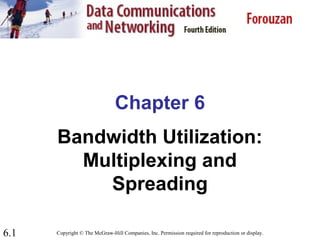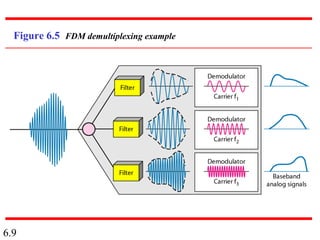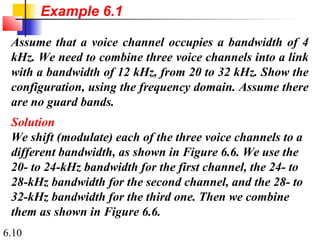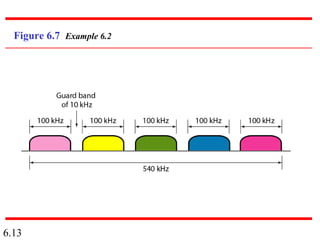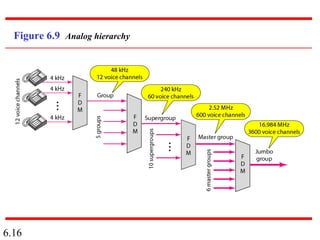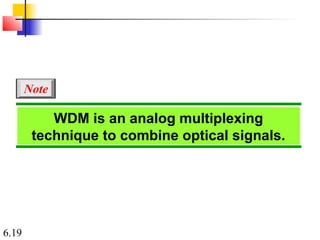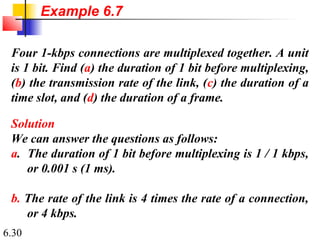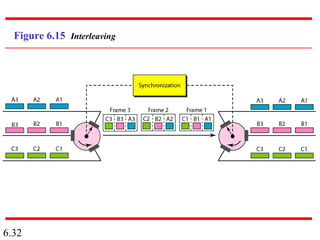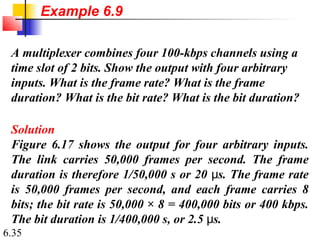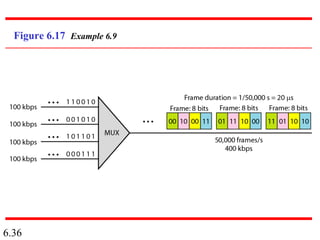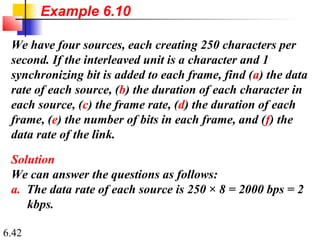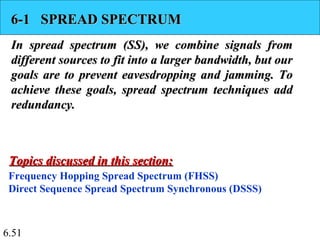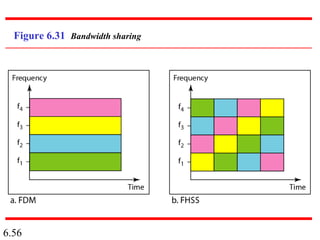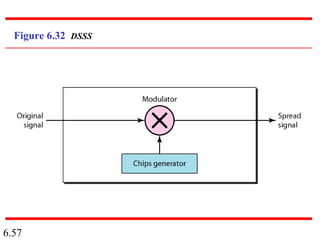This document discusses bandwidth utilization techniques including multiplexing and spreading. It begins by defining bandwidth utilization and explaining how efficiency can be achieved through multiplexing while privacy and anti-jamming can be achieved through spreading. It then discusses various multiplexing techniques like frequency-division multiplexing, wavelength-division multiplexing, and synchronous time-division multiplexing. Finally, it covers spread spectrum techniques including frequency hopping spread spectrum and direct sequence spread spectrum that allow signals to fit into a larger bandwidth for purposes of preventing eavesdropping and jamming.
